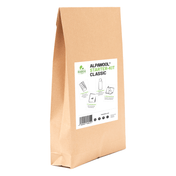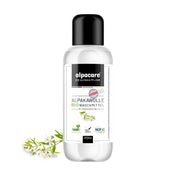Textile fibres or wool types and their sources
Wool is the colloquial term for textile fibers used to make clothing. The definition according to the Textile Labeling Act is as follows: The soft hair of the coat (as opposed to the so-called outer hair), primarily that of sheep.
Vegetable fibers:
Bamboo, cotton, cupro, hemp, jute, linen, lyocell / tencel, modal, SeaCell fibers (cellulose with algae), sisal, soy silk, viscose
Animal wool fibers:
Alpaca, Angora, Cashmere, Guanaco, Camel, Llama, Merino, Mohair, Horsehair, Sheep's Wool, Silk, Vicuna, Goat
Synthetic wool fibers:
Aramid, acrylic, elastane, melamine, nylon, polyacrylic, polyamide, polyamideimide, polybenzimidazole, polyester, polyethylene, polyurea, polypropylene, rPET
Mixed fibres:
There are different mixed fibers made from natural, synthetic and a combination of both fiber types.
History of wool fibres in brief
Natural fibers, i.e. those of plant and animal origin, have the longest tradition. Wool sheep are estimated to have been around for around 6,000 years, the first evidence of cotton comes from India and is around 8,000 years old. There are also supposed to be flax fiber remains from Georgia that are 34,000 years old.
Properties of wool types natural, synthetic and mixed:
Synthetic wool is usually much cheaper to produce.
Natural textile fibers such as cotton, cashmere or alpaca wool feel exceptionally pleasant on the skin. They are breathable and, unlike synthetic fibers, regulate the balance between heat and cold. Natural wool therefore adapts well to the ambient temperature. In winter it warms you and in summer it even has a cooling effect. It is very good for knitting and crocheting. It is light and flexible. It is astonishing that items of clothing made from animal fibers in particular do not need to be washed, or hardly at all. Airing them out in the fresh air is usually enough for them to be reused. In an emergency, they can also be carefully washed by hand.
Another option is the mixed fiber. As we know from cuvée wines, a balanced mixture often contains beneficial properties of the individual components. Our South African mohair wool, for example, also contains mulberry silk. (72% mohair, 28% silk) This ensures a combination of fluffiness and exceptional shine.
Subscribe to our emails
Be the first to know about new collections and exclusive offers.




